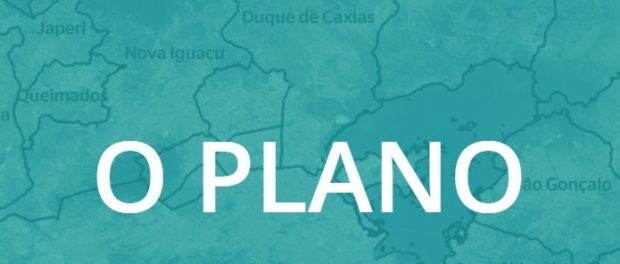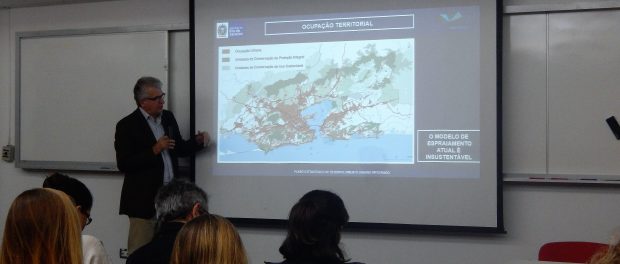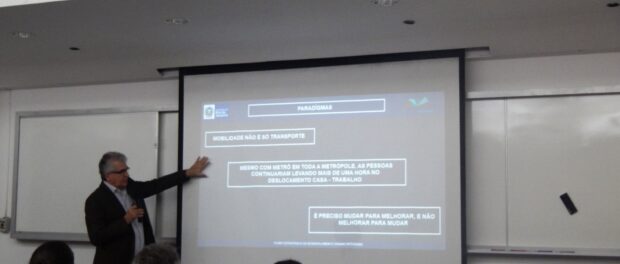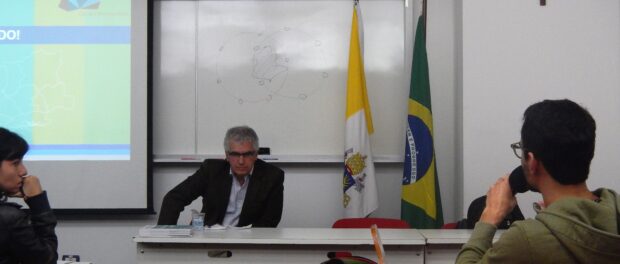
Following the recent presentation of the Rio de Janeiro Metropolitan Region Integrated Urban Development Plan (PDUI-RJ), which took place in the auditorium of the city’s General Archive in Centro, many civil society organizations and private sector groups have united to develop critiques and suggestions based on their experiences and socio-spatial contexts.
Aiming to collaborate and reflect on this process, on August 31 the Department of Architecture and Urbanism at the Pontifical Catholic University (PUC-Rio) and Rio’s Metropolitan Chamber organized a presentation and debate on the PDUI.
The PDUI is an initiative of the State government via the Metropolitan Chamber. As the website for the plan explains, “The project intends to elaborate a set of scenarios, strategies, and tools that guide government decisions in future years and that serve as a reference for the society of the State of Rio de Janeiro. The plan is still in the process of synthesis and should be completed at the end of 2017 in order to be submitted for approval by the State Legislative Assembly (ALERJ).”
The presenter of the event was Vicente Loureiro, an architect, urbanist, and Executive Director of Rio de Janeiro’s Metropolitan Chamber who highlighted historical studies and cases of urban development that underscore the current challenges of urban mobility and housing. He declared that “one of the objectives of the Development Plan is to identify strategies to avoid the high concentration of economic activities in certain areas of the metropolitan region.” Then, he described the city as a very extensive metropolis with a great need to avoid areas becoming over-priced due to the high concentration of activity which also results in a regional dependency on large-scale transportation systems. “[The central municipality of] Rio concentrates 75% of the region’s jobs. We have neither the transportation system nor the technology to sustain this model. It is the region that records the highest daily commuting times in Brazil,” he said. Loureiro described the current form of urban sprawl as unsustainable.
In his lecture, he explained that the center of the metropolis has a concentration of cultural and environmental wealth, leisure hubs, and public facilities, as well as the concentration of jobs. The lack of structure of the metropolitan region can also be attributed to unmet demands for services. Loureiro stated that “85% of hospital networks are concentrated in areas close to the center of Rio,” and noted that “these networks must be better distributed in order to build a more fair and equitable city.” Loureiro presented specific examples of institutions that could be deliberately located in more strategic central spots, such as universities and large hospitals that could have a Trauma and Orthopedics sector to facilitate travel and treat patients more efficiently and quickly.
Loureiro also affirmed that close to 30% of rural areas of the region, which contained green areas that were free or used for agricultural production—have become precarious peripheral settlements, including new favelas, generating demands for new public infrastructure and creating higher costs for basic services (such as electricity, gas, water, and road paving).
Loureiro pointed out that high-efficiency modes of transportation like the train and metro are also the most expensive, and he argued it is necessary to have better connections between bus extensions in order to serve the region. “If we had money—and we don’t—we could connect more people by expanding the metro,” he said. But he also emphasized that, currently, Line 2 of the metro has lost passengers because of the economic crisis and because many benefits like transportation coupons have been cut. As a result, many passengers have opted to take buses and vans, which cost less.
Barra da Tijuca was presented as a case study: it was projected in the 1960s by architect Lúcio Costa as a new hub, creating employment and housing. But it grew in a peculiar form which goes against common sense, because those who reside in the district rarely work there, and vice versa. Considering the question of centrality and decentralization, Loureiro pointed out that “Madureira is where the soul of our city is, not only for the samba and entertainment schools that were born in the region, but also for our carioca accent, the ‘s’ as ‘sh’ that came from there.”
The faculty of the Architecture and Urbanism department of PUC-Rio were present and participated in the debate, asking questions and suggesting changes to the plan. Professors Luís Madeira and Pedro Lobão suggested developing landscapes and green areas in peripheral regions to increase attractiveness; this would improve upon the current state of decentralization, since the largest parks (the Tijuca Forest National Park, the Botanical Gardens, Quinta da Boa Vista, and Bosque da Barra) are also located in the metropolis’ privileged region, with few exceptions such as Parque Madureira.
Loureiro continued presenting case studies of urban planning such as Nova Iguaçu and Duque de Caxias, two important economic poles that are physically close but segregated by urban mobility. A passenger who wishes to get from one place to the other needs to transfer in Rio de Janeiro, showing how the system is poor and being revised. “The neighborhoods of Leblon in Rio and Austin in Nova Iguaçu were created in the same year, but they are separated by centuries in terms of simple issues such as water and sewage. We should seek to universalize services to remedy socio-spatial differences,” reaffirmed the architect-urbanist. “The postcard of Brazil is Rio de Janeiro. We cannot continue presenting the environmental agendas of the 19th century.”
Loureiro concluded the presentation on the topic of investment projects and opportunities for neighborhoods and peripheral regions of the metropolis that aim to house the population. He declared that the My House My Life federal public housing program lacks a quality product and spatial planning, but is still an important foundation for the homeless and at-risk population.
Some of the goals of the Development Plan such as living conditions and income generation were also debated. At the end of his presentation, Loureiro emphasized the importance of establishing ongoing communication in order to evaluate the efficiency of PDUI programs implemented throughout its management.



